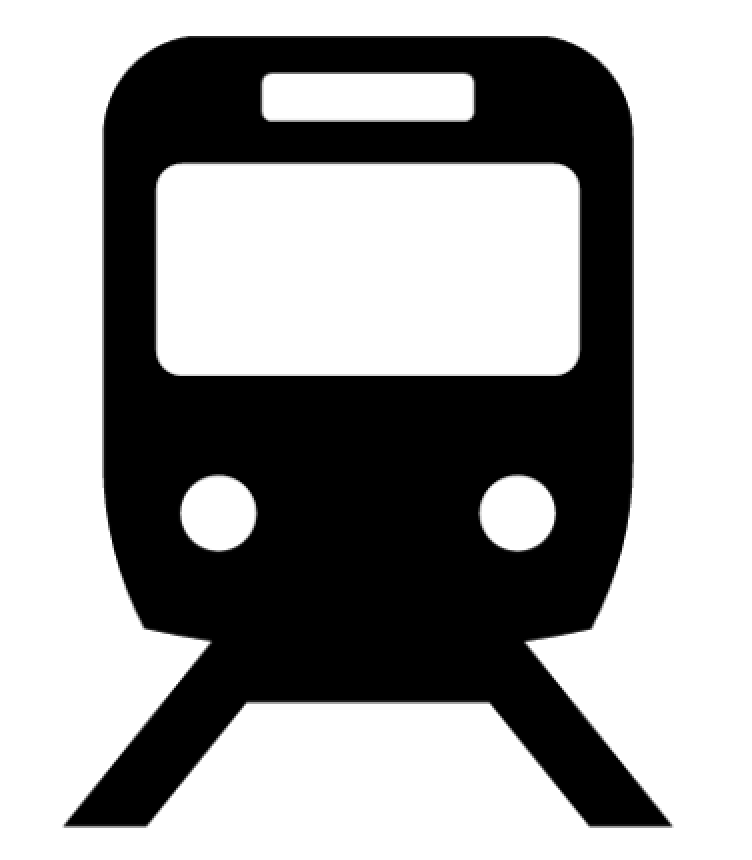As people's lifestyles change, they've moved out of
London, attracted by more space and lower cost housing in spite of longer commutes into their offices in the capital. And these changes are only being accelerated by the current pandemic, with people 'forced' into a realisation that they can do a lot of their work from home and only need to visit the office from time to time. Dorchester and Weymouth are commutable to London one or two days a week, even if 5 days a week would be a bit much.
The same has been noted for people living in the
Exeter area, with strong reports of a relative growth in travel to work from as far east as Yeovil on "The Mule" - the South Western main line from Waterloo.
From the
Bristol and Bath area in the north, the conventional commuter land which runs out at Frome is extending southwards too.
This is not a totally new phenomena, with two early morning trains from Weymouth into the Bath / Bristol area, extra commuter services above the hourly clockface into Exeter, and changes to the pattern off Weymouth towards Waterloo to facilitate these long distance day returns. The application of "peak fares" to these earlier trains is an indication that these services really are needed and that people are prepared to pay a premium to use them.
And so - for all of the railway lines mentioned - what services do we have now, and what should the zero carbon future be for them once we move ahead beyond the pandemic? This post is looking at the Heart of Wessex line - that runs from Weymouth, via Dorchester and Yeovil to Frome, then onward via Trowbridge to Bath and Bristol, serving an eclectic mix of intermediate communities.
The Heart of Wessex line was engineered as a double track main line, leaving the
GWR▸ 's London to Bristol main line just to the west of Chippenham and headed south with some west all the way to Weymouth. But come the reduction in rail in the middle of the last century, London to Weymouth traffic was routed via Southampton and the Heart of Wessex was reduced to a single line with a few passing loops. Maintenance was minimised, services slowed and became very infrequent, and indeed the line only just avoided complete closure in parts. Indeed, services were redirected to Bath and Bristol rather than Chippenham, and the section of the line north of Trowbridge lost its scheduled passenger services in 1966. There have been improvements since - the Heart of Wessex Community Rail Partnership has done an excellent job of promoting inward and outward travel (and not just the "honeypot" of day trips to Weymouth in the summer) and that's on top of the other regrowth due to the up-coming area and the natural increased use of rail nationwide.
All of which means we have a creaking system at present - far fewer trains than are really needed, inconvenient gaps, slower than we would really like, and some perverse operating structures and layouts.* What sort of service should we be looking to in the future?
* What sort of infrastructure improvements would be needed to accommodate them?
- South from Westbury ... the service must be hourly at least to Frome and to Yeovil
- From Yeovil to Dorchester and Weymouth, an hourly service too; odd gaps may be tolerated
- Services should connect at Yeovil with the Salisbury - Exeter line
- Services should connect at Castle Cary for Taunton
- Services should connect at either Castle Cary or Westbury for Reading and London
Let's take a first look, starting with what could be achieved without new infrastructure.* An hourly train from Weymouth to Westbury and probably beyond, calling at all stations
* This train to pass the next train at Maiden Newton, where there is already a passing loop
* The train to reverse at Yeovil Pen Mill, up to Yeovil Junction, reverse there again back to Pen Mill
* The next train (2 hours behind) will be arriving at Pen Mill at that time, and they pass
* Service carries on to Castle Cary (3 min stop), Bruton, Frome, Westbury
* Passes next service on double track between Witham and Frome
* An hourly train from Westbury to Weymouth calling at all stations (NOT Yeovil Junction though)
* Passing northbound services as shown in the bullets just above
* Around 10 minutes for train to reverse at Weymouth
The doubling back of the northbound train at Yeovil will irritate some passengers but
- It allows an hourly service without the need for extra loops anywhere
- It provides a connection from Weymouth to Exeter via Yeovil Junction
- It provides an Exeter to Weymouth connection (change at Junction AND Pen Mill - cross platform)
- It provides hourly services all the way from Yeovil northwards with minimal operational delays
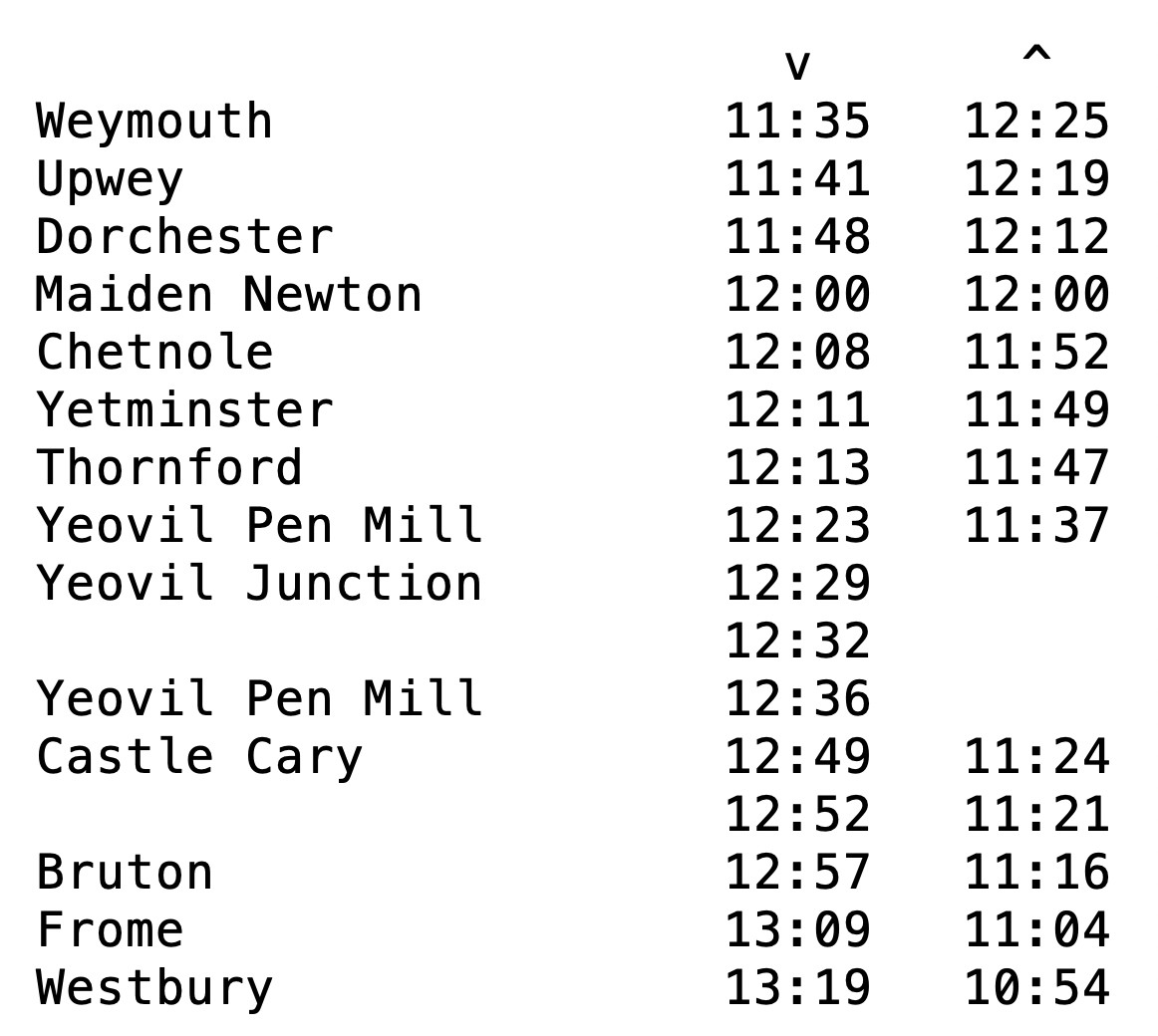 With Infrastructure imporvements, could the service be bettered?
With Infrastructure imporvements, could the service be bettered?* With re-instatement of the Clifton Maybank curve and completion of the west-south curve into Yeovil Junction, trains could call there in both directions with a single reversal.
- Trains would then pass each other at Yeovil Pen Mill as per the above (no infrastructure change) example.
- This would allow increased connectivity at Yeovil
- Journeys from Exeter direct to Dorchester and Weymouth would be possible
- Bringing an extra platform back into use at Yeovil Junction would improve options there
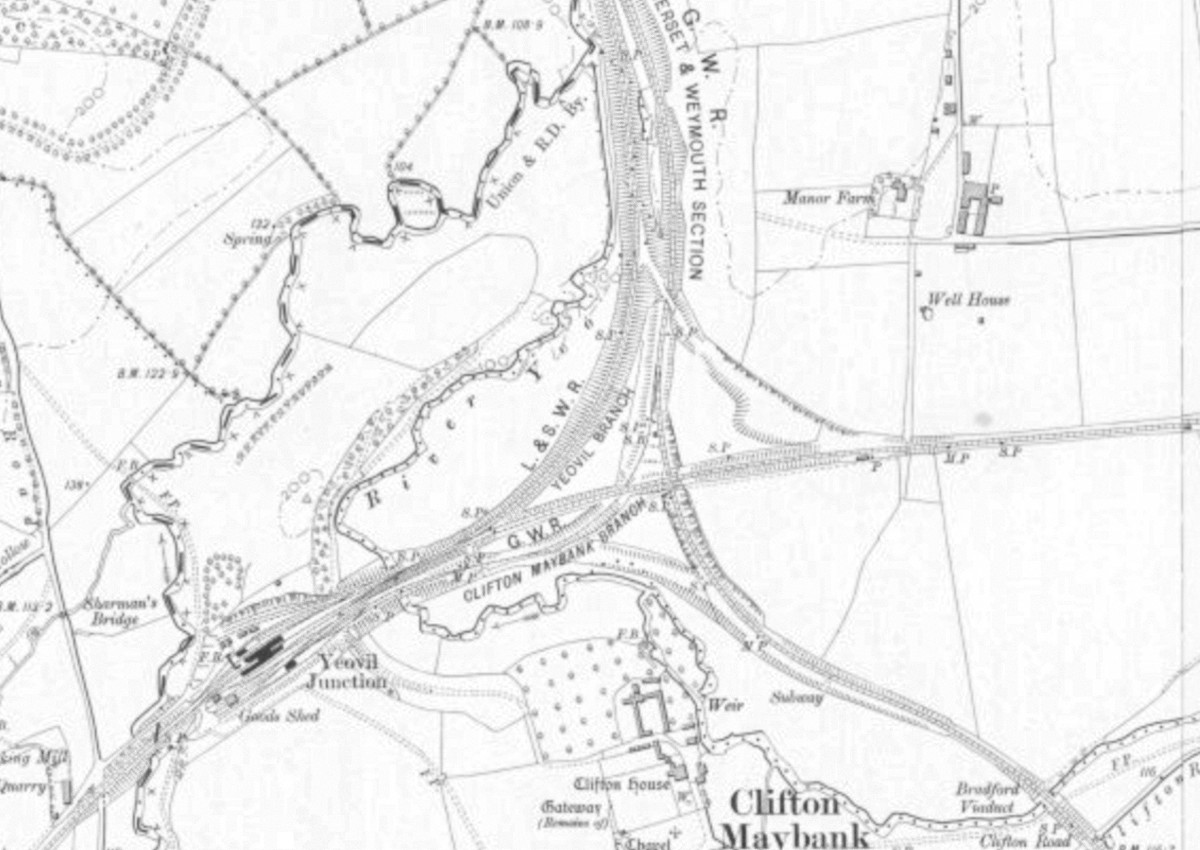
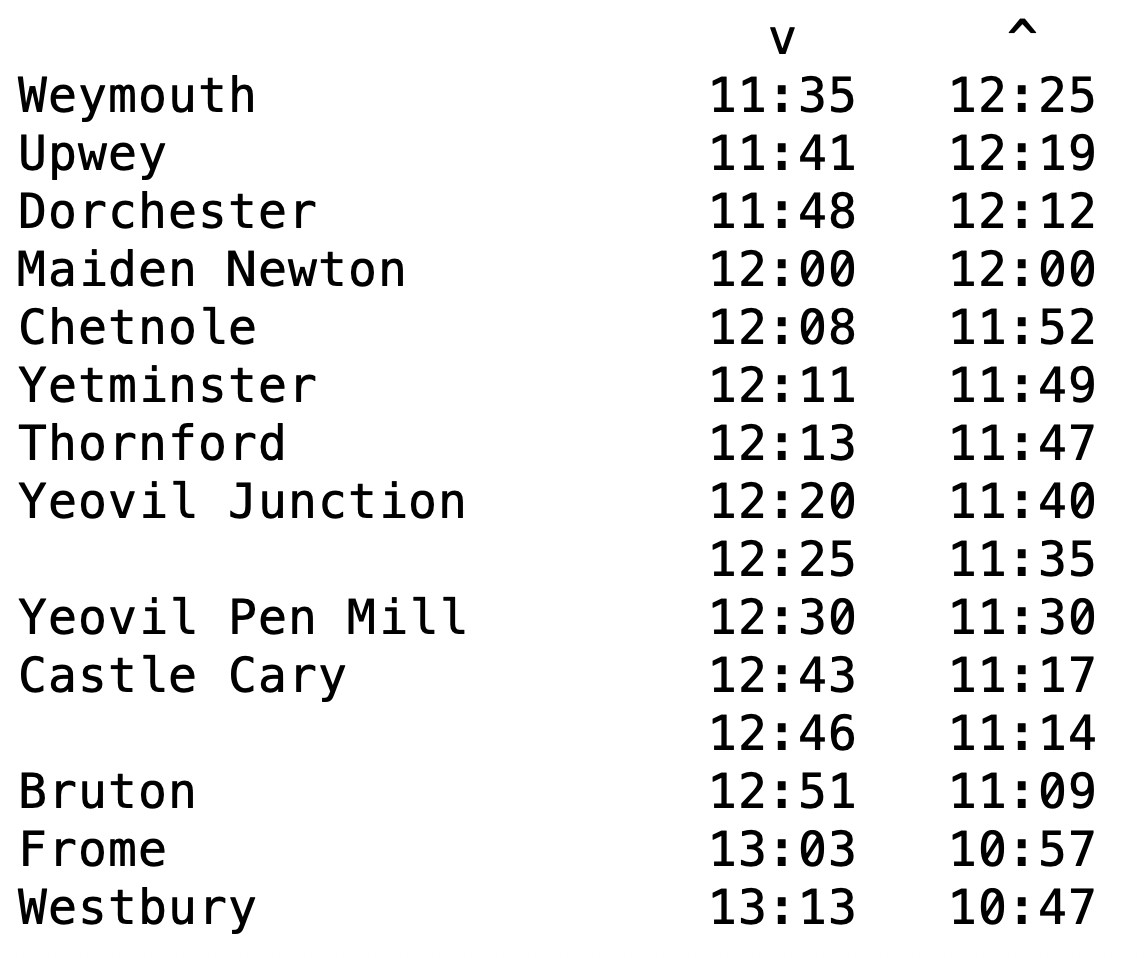
* A loop or redoubling much of the line from Yeovil Pen Mill to(wards) Castle Cary
- Trains to pass at around Sparkford
- would allow a clockface pattern that included neither waits nor diversions to Yeovil Junction
- This would also add diversionary capacity for when GWR Devon and Cornwall trains are running via Honiton
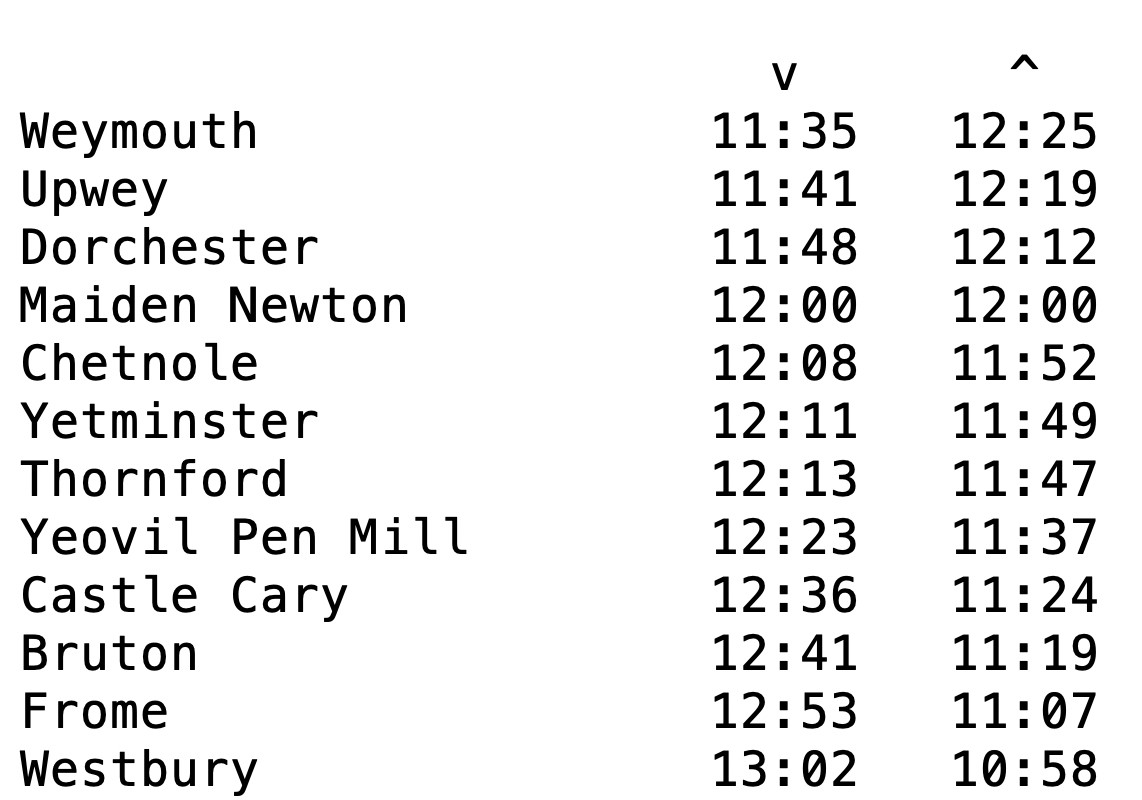
* A south to west curve has been suggested at Castle Cary
- No immediate benefit on current Heart of Wessex Route
- Would allow direct (no reversal) trains Yeovil to Taunton
Timetables are a sample hour


